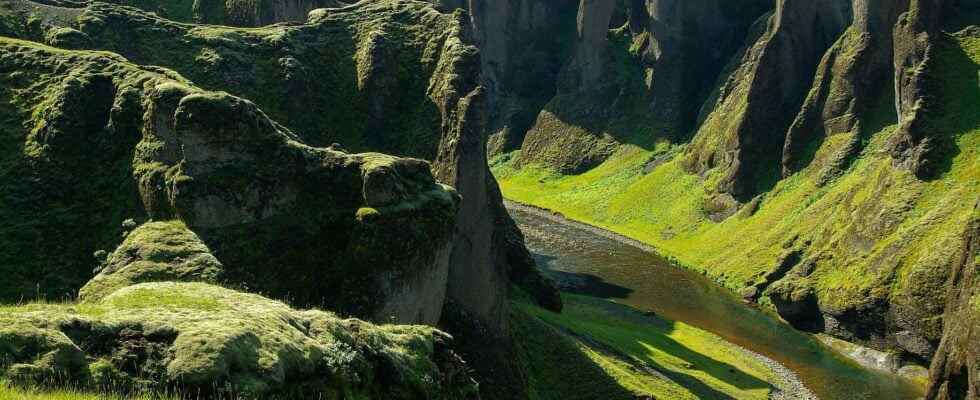A new study provides a better understanding of where and how subduction zones are initiated, a major stage in the Wilson cycle. It appears that the tectonic and magmatic heritage of the continental margins strongly influence the location of the subduction zones either at the foot of the margin or in the intra-oceanic domain.
You will also be interested
[EN VIDÉO] A billion years summed up in 40 seconds: plate tectonics Researchers have modeled the movements of tectonic plates over the past billion years.
The tectonic plates is governed by a large cycle of oceanic opening and closing. Thus supercontinents follow one another over millions of years. The Wilson cycle therefore involves alternately two major tectonic processes: the continental tear, followed by the opening of an ocean, and the initiation of a zone of subduction which will close the oceanic domain previously formed.
From continental tear to ocean closure: the Wilson cycle
The continental tear mechanism is known as continental rifting. This crucial stage of the Wilson cycle is characterized by extensive mechanisms that progressively go stretch the continental crust until it breaks. The thinning and then the tearing of the continental lithosphere will be associated with a rise in coat asthenospheric which will generate the creation of a new ocean ridge at the breaking point. A new ocean is born. Gradually, theaccretion of oceanic crust at the level of this ridge will make this ocean grow and move away the two new continents resulting from this fragmentation.
The continental borders are then called “margins”. The architecture of these margins is very variable and will depend in particular on the quantity of magma brought into play during the process of stretching, thinning and breaking. One thus differentiates the margins rich in magma from the margins poor in magma. The latter are characterized by a predominance of tectonic processes. Here, it is not the magma that will make it possible to accommodate the extreme extension undergone by the continental lithosphere, but the play of large flaws which will gently bring the mantle to the surface, without any process of fusion. This phenomenon is known as mantle exhumation. The discovery of this mechanism, which is also observed at the level of some ocean ridges, is relatively recent and dates from the 1980s.
At the other end of the Wilson cycle is subduction. Because the Earth being a sphere, it is impossible to separate the continents ad infinitum. When there is an oceanic opening on one side, there is necessarily a closing on the other. The closing of an ocean is governed by compressive forces which will generate the creation of a subduction zone: the oceanic plate passes under another plate, oceanic or continental. This process allows the convergence of masses continental, which can result in a collision phase. The cycle is complete and will start again with a new extension phase.
The quantity of magma: a crucial point for the initiation of a subduction
However, the mechanisms governing the initiation of a subduction zone are still poorly understood. The question of the factors determining the location of subduction zones is still relevant. An international team of researchers, led by Antoine Auzemery of the University of Utrecht, has shown that the nature of continental margins, and in particular the way they have developed in the past, strongly influences where a new subduction will be initiated.
Their study, the results of which were published in the journal Gondwana Research, is based on the generation of digital models. The researchers thus tested the sensitivity of the initiation of a subduction in two different contexts: that of an old margin rich in magma and that of a margin poor in magma.
A question of the resistance of the lithosphere
It appears that, in the case of a margin poor in magma, the presence of an exhumed and serpentinized mantle induces a rheological decoupling at the base of the continental crust. In a compressive context, this zone of weakness will localize the deformation in the form of a large shear zone propagating into the mantle. This zone of intense deformation will serve as the starting point for the initiation of a subduction zone, which will then be located at the foot of the continental margin. We will then speak of active margin. The Alps result from this configuration and the subduction, at the level of the Adriatic margin poor in magma, of the oceanic crust of the small ocean of the Tethys alpine.
Conversely, the margins rich in magma, which generally present a large pile of magmatic rocks, have a resistance with much greater deformation. The different geological levels are coupled, which prevents the sliding of one level relative to the other. In this rheological context, the deformation will therefore not be localized at the level of the continental margin but will be transferred to a less resistant domain. Subduction will thus be initiated preferentially within the oceanic crust itself, along pre-existing faults. We then speak of intra-oceanic subduction. This configuration also took place within the Mediterranean. The margins rich in Dinarid and Hellenid magma, the current east coast of the Adriatic Sea, bear witness to the closure of an ancient ocean, the Neothetys Ocean, by initiation of an intra-oceanic subduction 160 to 180 million ago. years.
Interested in what you just read?
.
fs11
